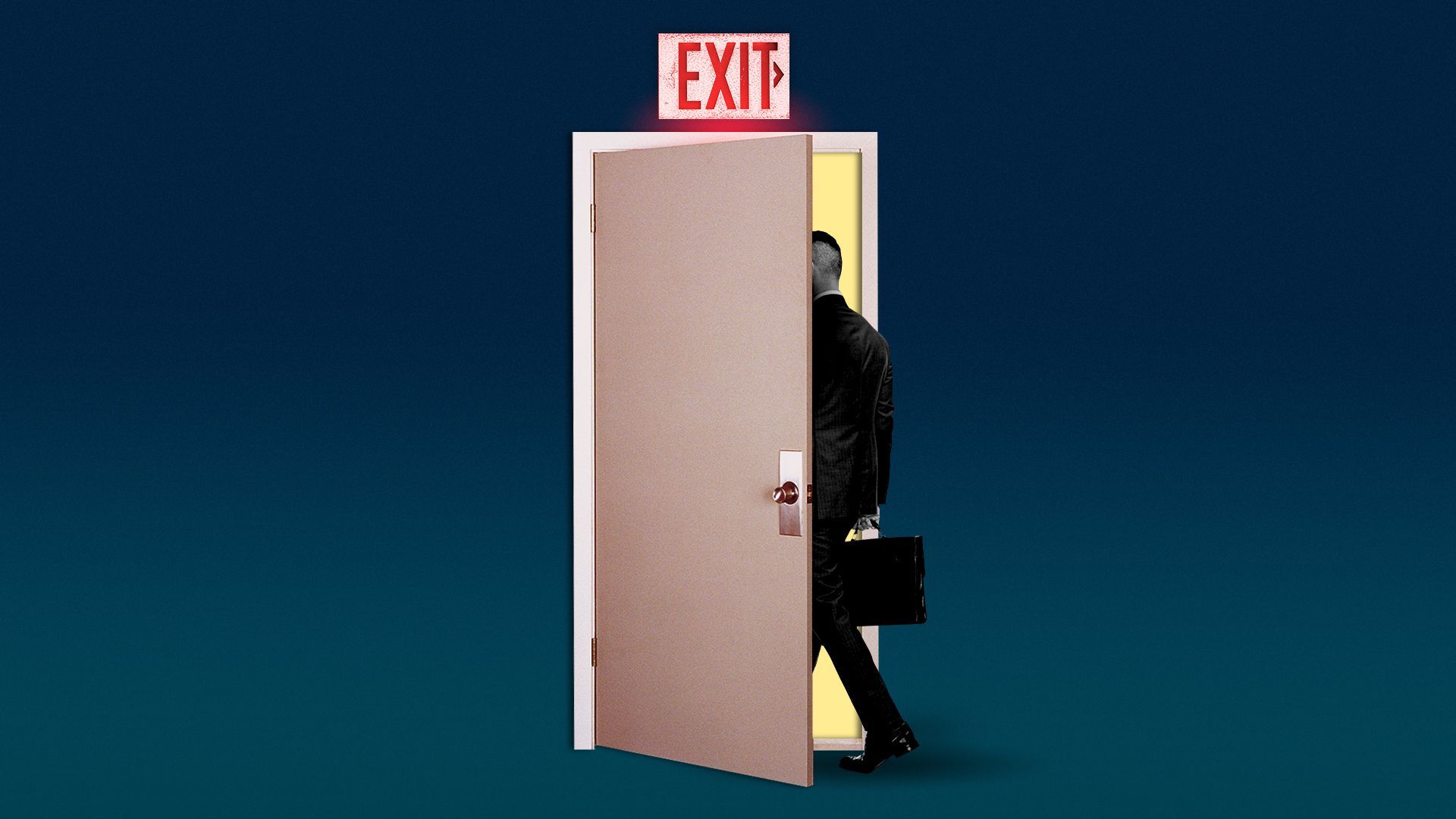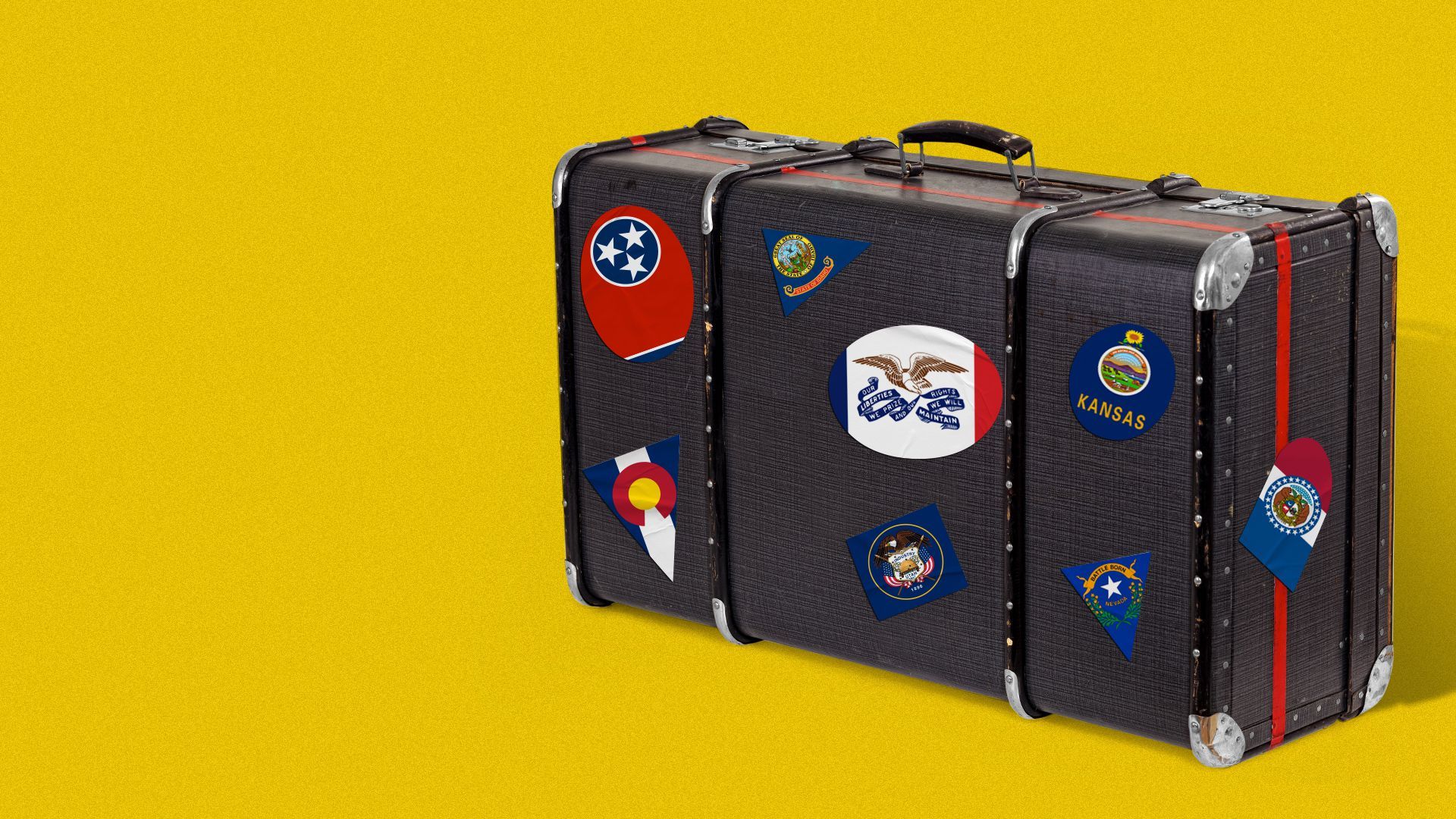| | | | | | | Presented By Deloitte | | | | Axios @Work | | By Erica Pandey ·Feb 03, 2021 | | Welcome back to @Work. Send your thoughts to me at erica@axios.com or on Twitter @erica_pandey. Today's newsletter is 1,409 words, a 5-minute read. First up... | | | | | | 1 big thing: Why your "work bestie" matters |  | | | Illustration: Annelise Capossela/Axios | | | | Here's an essential element of the pandemic workplace: a best friend. Why it matters: Studies have shown that having friendships at work can boost happiness and productivity. And cultivating these close relationships are even more important now as lockdowns and isolation worsen workplace burnout across America. "The research is extremely clear that having friends at work has benefits," says Marissa King of the Yale School of Management. "We get our sense of purpose and our intrinsic sense of motivation through relationships." - Having one or two close friends at work makes people engage more with their tasks and the broader mission of their companies. And it makes them less likely to quit, King says.
- According to a study by author and researcher Tom Rath, people with close work friends were 96% more likely to say they felt "extremely satisfied with life."
- And during the pandemic, when people have so little choice over how they work or where they work, being able to control who our work friends and confidants are can be a big source of comfort, King tells me.
There can be different perks of work friendships. - For example, befriending someone in a different department could boost creativity by exposing you to new ideas.
- Making friends with a peer on your team could be a healthy way to vent or solve work problems.
But, but, but: Despite their benefits, work friendships are still relatively uncommon in corporate America. - The average American has five friends at work, but the majority of these relationships are surface-level. Only 15% say they have a "real friend" in the office, King writes in her book, "Social Chemistry."
- And women and people of color often find it even harder to cultivate work friendships, notes King. Women are more likely to miss out on after-work drinks or lunches because they've got other responsibilities like child care. And people of color are more likely to simply be excluded from such gatherings.
Worth noting: There are of course downsides to work friendships. Any sort of personal relationship at work can get complicated when issues like performance evaluations or promotions come up. - Says King, "When boundaries get blurred, you feel forced to make a choice of, 'Am I loyal to a person or am I loyal to my work?'"
Before you scroll: Do you have a work bestie? I'd love to hear about them. Send me an anecdote, and I'll publish the best ones in next week's edition. |     | | | | | | 2. The pandemic-era union renaissance |  | | | Illustration: Aïda Amer/Axios | | | | The pandemic walloped the job market, but it might have strengthened unions. The big picture: Even though the pandemic brought historic job losses, the share of U.S. workers who are union members rose half a percentage point to 10.8%, according to Bureau of Labor Statistics data released Friday. - That's because union members held onto their jobs at higher rates than non-union members. "There's some evidence that unions did a good job at protecting their members from layoffs, compared with the non-union sectors," says John Logan, a U.S. labor historian at San Francisco State University.
Why it matters: The pandemic exposed the ugly ways in which workers — especially those on the low end of the wage spectrum — are treated. And that has revitalized the appeal of unions and underscored the importance of worker voices. What's happening: Unions have been losing power in the U.S. for decades now. But a number of factors are coming together and setting the stage for a union renaissance. - Interest in unions has been steadily rising among workers. According to survey research by MIT's Tom Kochan, the share of non-union U.S. workers who would vote to join one jumped from 32% in 1995 to 48% in 2017.
- "The labor movement has shown signs of life in recent years," Logan says. "Plenty of inspiring stories, such as domestic workers, car wash workers, online media workers and more."
- And more recently, unions have started showing up in new and unlikely places. Google workers formed one. And Amazon warehouse workers are getting closer to forming one in Alabama.
- That would be especially significant because Amazon has earned a reputation as "one of the world's most powerful and most anti-union corporations," Logan says.
On top of all of that, President Biden has said he'll be "the most pro-union president you've ever seen." Go deeper: The pandemic exposed workers' lack of power |     | | | | | | 3. Staggering stat: Just 15 Black CEOs in Fortune 500 history |  | | | Illustration: Annelise Capossela/Axios | | | | In March, Rosalind "Roz" Brewer will step in as Walgreens CEO, becoming the fourth Black Fortune 500 chief executive, and second-ever Black woman to permanently lead a Fortune 500 firm. The big picture: In the history of the Fortune 500, there have been 1,800 different CEOs. Only 15 of them have been Black, reports Fortune's Phil Wahba. Another four have held interim positions. "It's a stark reminder of how far corporate America's top decision-makers have to go during an unprecedented push by politicians, employees and even a stock exchange to diversify their top ranks," my colleague Courtenay Brown writes. To mark the start of Black History Month, Wahba dove into the lives of those CEOs and examined why Black representation in corporate America has remained so abysmal for so long. - One major problem is that too few Black professionals are put in management tracks. Representation of Black businesspeople is high in fields like accounting and marketing, but people who are successful in those parts of companies are less likely to become CEOs. It's typically employees who deal with profit and loss that rise to chief executive positions.
- Other systemic issues exist within recruitment practices. Companies routinely go to the same traditionally elite schools, such as the Ivy League, to seek out new talent. And the recruitment pool there skews white.
- Additionally, turnover rates tend to be higher for Black employees than for their white counterparts because they are less likely to feel valued or respected at work.
Go deeper: Wahba's profile of Fortune 500 Black CEOs is worth the read. |     | | | | | | A message from Deloitte | | How AI-enabled marketplaces are reshaping the workforce | | |  | | | | "The opportunity marketplace" plays a key role in accelerating how companies are deploying and developing their workforce. The reason: It enables organizations to maximize human productivity and potential – driving agency and well-being, enhanced potential, and perspective. | | | | | | 4. Tracking remote work's footprint |  | | | Illustration: Aïda Amer/Axios | | | | As I've reported, the pandemic-induced rise in telework is reversing a decades-long trend of Americans staying put. With the freedom to work from anywhere, many people are leaving big cities for smaller ones. A pair of stories I read this week illustrate how this is happening in real time. - Zillow searches are spiking, the Atlantic's Derek Thompson reports. "We've seen online searches for Boise, Phoenix, and Atlanta rising fastest among people who live in coastal cities, like Los Angeles and New York," Jeff Tucker, Zillow's chief economist, told Thompson.
- And Alexandra Hudson writes about a new trend in USA Today: "Zoom towns." One such town is North Wilkesboro, North Carolina, which is in the foothills of the Appalachian mountains and is welcoming new teleworking residents after years of losing people to large metros.
|     | | | | | | 5. Worthy of your time |  | | | Illustration: Aïda Amer/Axios | | | | 🔊Reimagining our relationship with work (Axios) - My colleague Dan Primack, host of Axios' "Re:Cap" podcast, spoke to Sarah Jaffe, author of a new book titled "Work Won't Love You Back" about the post-pandemic future of work and burnout. One problem, she says, is the American expectation that you have to love your job.
Essential workers soldier on (Wall Street Journal) - We're nearly a year into the pandemic and low-wage workers across several industries are still serving essential functions in society while risking their lives. "As time goes on, everybody forgets that you're still on the front line," Joyce Babineau, a supermarket employee in Massachusetts, told the Wall Street Journal.
A report card for the Paycheck Protection Program (New York Times) - The $500 billion Paycheck Protection Program saved between 1.4 million and 3.2 million jobs, according to a study by MIT economist David Autor. "Given the program's cost, saving jobs on that scale doesn't necessarily qualify as a success," Ben Casselman and Jim Tankersley write in the New York Times.
An office full of young people (Fast Company) - Survey after survey has shown that younger employees are more eager to go back to their offices than their older counterparts. And for many young people who are in the early phases of their careers as well as new hires, in-person onboarding and mentorship can be very valuable. To that end, many CEOs and experts say future offices might be full of younger and newer staff.
|     | | | | | | 6. 1 fun thing: A peek at Amazon's crazy HQ2 |  | | | The Amazon HQ2 Helix. Photo: NBBJ | | | | As remote work's evangelists talk about the end of the physical office, Amazon is working on one of the grandest corporate campuses I've ever seen. What's happening: Amazon is out with new, detailed plans for its second headquarters (HQ2) in northern Virginia — a $2.5 billion project for 25,000 employees. - "The centerpiece will be the site's fourth and tallest tower, a 350-foot structure dubbed the Helix because it will feature two spiraling outdoor walkways with trees and plants from Virginia that twist to the building's top," writes the Wall Street Journal's Konrad Putzier.
- Amazon is leaning into the incorporation of outdoor space, with a dog run and an outdoor amphitheater.
- The site, designed by architecture firm NBBJ, will also feature parking for 950 bikes.
The bottom line: This is yet another big sign that America's leading companies are betting on returning to the workplace. |     | | | | | | A message from Deloitte | | New talent strategy drives to greater workforce agility | | |  | | | | "The opportunity marketplace" has the potential to change how companies build teams, cultivate enduring human capability and support innovation. Here's how: By pushing organizations to think beyond "roles" and to rethink work itself. How its reshaping the workforce. | | | | Thanks for reading! | | | | Axios thanks our partners for supporting our newsletters.
Sponsorship has no influence on editorial content. Axios, 3100 Clarendon Blvd, Suite 1300, Arlington VA 22201 | | | You received this email because you signed up for newsletters from Axios.
Change your preferences or unsubscribe here. | | | Was this email forwarded to you?
Sign up now to get Axios in your inbox. | | | | Follow Axios on social media:    | | | | | |










No comments:
Post a Comment